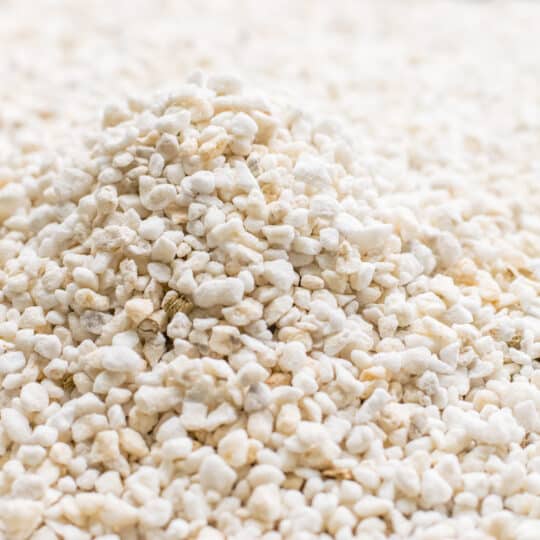Using Perlite in Cryogenics
Why it’s an Excellent Mineral for Cryogenic Insulation

For industries that require cryogenic storage and transportation—from healthcare to aerospace—finding the right material to insulate extremely cold substances is both a challenge and a necessity. But it’s also possible with an often overlooked, naturally occurring volcanic glass. Learn why using perlite in cryogenic insulation is an ideal option.
Components of Cryogenic Insulation
When a company is tasked with storing and transporting cryogenic fluids and gas, this requires maintaining temperatures that range from around -238°F to below absolute zero (-459.67°F). It’s safe to say that a conventional insulated cooler won’t work in this situation.
Cryogenic insulation is a specialized material used to minimize heat transfer between the extremely cold substance and the surrounding environment. Some of the main purposes of proper cryogenic insulation include:
- Preserving Cryogenic Liquids. Liquid nitrogen, oxygen, and natural gas (LNG) are commonly used in various industrial, medical, and scientific applications. Maintaining these substances at ultra-low temperatures is critical to its stability and usability.
- Energy Efficient Processes. Cryogenic processes often involve the liquefaction or storage of gas at extremely low temperatures. Efficient insulation helps to minimize heat transfer, reducing the energy required to maintain cryogenic conditions and lowering operational costs.
- Maintaining Safe Practices. Cryogenic fluids become unstable if they come in contact with materials or equipment at the wrong temperature. Proper cryogenic insulation helps to prevent accidents from happening.
Proper Insulation Materials
Because of the extreme conditions and volatile nature of the processes involved, the type of material used for cryogenic insulation is crucial to its effectiveness. The ideal material must have the following characteristics:
- Low Thermal Conductivity. This property ensures that the cryogenic fluid remains at the desired temperature and effectively minimizes heat transfer, especially in environments with higher ambient temperatures.
- Stability at Low Temperatures. The right material must maintain structural integrity and effective insulating properties at extremely low temperatures without becoming brittle.
- Resistance to Cryogenic Fluids. Since the insulation materials will come in contact with cryogenic fluids or gas, it must not cause adverse effects.
Using Perlite in Cryogenic Insulation
By selecting the appropriate cryogenic insulation materials and techniques, engineers and operators across industries can help ensure optimal performance and reliability in extreme environments. While it’s not a task that should be taken lightly, it is one that could use a lightweight material.
Perlite is a lightweight, porous material with excellent insulating properties. When heated, this naturally occurring volcanic glass pops like popcorn and expands up to 20 times its original volume. In addition to its excellent insulating properties, perlite is commonly used in cryogenic applications due to a number of ideal characteristics, including:
- Low Thermal Conductivity. Perlite has a porous structure consisting of countless tiny air pockets. This creates an effective insulating barrier that significantly reduces heat transfer. Less heat minimizes energy loss and maintains the desired low temperatures in cryogenic systems.
- Non-Toxic and Non-Combustible. Safety is a principal concern in cryogenic environments. Perlite’s natural makeup makes it a reliable choice for insulating materials in contact with volatile cryogenic fluids.
- Chemical Stability. Perlite resists corrosion and degradation even when exposed to harsh materials. This helps ensure the longevity and reliability of an insulation systems, reducing maintenance requirements and operational downtime.
- Lightweight. Weight considerations can impact the efficiency and cost-effectiveness of storage and transportation systems. Perlite is easier to handle and transport, keeping efficiency high and costs low.
Because of these factors, perlite has often been used in the following applications:
- Insulating liquified natural gas tanks, pipelines, and liquefaction facilities
- Industrial gas storage
- Insulating rocket fuel tanks and aerospace components
- Cryogenic freezing and storage of food products
With its exceptional thermal insulating properties, lightweight nature, safety profile, and chemical stability, perlite is a reliable choice for preserving ultra-low temperatures in demanding environments. As industries continue to push the boundaries of cryogenic technology, perlite remains an indispensable material, naturally ensuring the success and safety of critical cryogenic applications.